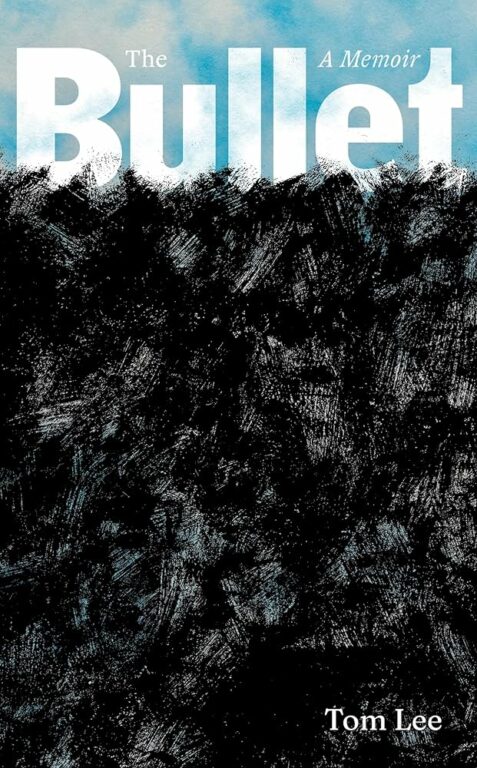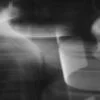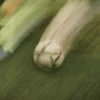On the morning of his admission to Severalls in June 1968 my father remembers sitting in a wheelchair at one end of the main corridor, once the longest in Europe, a corridor so long that he could not see where it ended. He was taken to a ward and later he sat in a consulting room, now in a dressing gown, in front of a horseshoe of eight or nine people discussing his condition. He was in tears but also relieved because finally there was an acknowledgement that something was wrong with him. After a while his psychiatrist, Dr Fox, said, ‘I think we’ll go for modified insulin therapy.’
My father was in a ward with twelve other patients, some of whom were receiving the same treatment. Every morning, those who were not on modified insulin therapy all went to breakfast. The others remained on the ward and at 8 a.m. Nurse Beaney came around with a medical trolley, drew the curtains around the beds and gave each of the patients an injection of insulin. Every half hour he came back to take their pulse and temperature, until 11.30 a.m. when their breakfast was brought in. By this time, my father and his fellow patients, tanked up with insulin, were ravenous. They ate a large breakfast and when lunch was brought in at twelve they ate that, too.
Insulin helps the body move blood sugar into the cells. People with type 1 diabetes inject it in order to reduce the level of sugar in the blood and avoid the symptoms of hyperglycaemia. An excess of insulin causes the cells to absorb too much sugar, risking a hypoglycaemic reaction instead. In a mild case, the symptoms of a hypo range from sweating and light-headedness to anxiety and a rapid heartbeat. Severe hypoglycaemia can lead to seizures, unconsciousness and death. The original application of insulin in psychiatry was called insulin shock therapy. It induced a temporary coma and was used mainly as a treatment for patients with schizophrenia. Nobel Prize winning mathematician John Nash received the treatment for his paranoid schizophrenia. In A Beautiful Mind, the film of Nash’s life, Russell Crowe is strapped to the hospital bed and receives the injection in his arm. A tear wells from his eye before he falls unconscious. Then, as the music swells, two bits are placed in his mouth to stop him biting off his tongue, and he starts to convulse violently, his wrists and arms straining at their bindings, his eyes closed throughout. (Crowe was nominated for an Oscar but didn’t win.)
Insulin shock therapy had been phased out by the time my father was in Severalls. In the modified version, developed in the 1930s as a treatment for neurosis, patients were given an increased dose until the insulin flooding the system caused ‘a reaction’, as Dr Fox described it to my father. The principle was not dissimilar to electroconvulsive therapy or ECT, then known as electroshock therapy, which a number of patients on my father’s ward were receiving: that a physical shock to the system, such as a seizure, could bring about abrupt remission from psychological symptoms, a kind of reset, the exact mechanism of which was mysterious.
‘What is a reaction?’ my father asked.
Dr Fox told him, ‘You’ll know when you have one.’
My father was twenty-eight years old. He and my mother had been married for two years, and he had just finished his second year as a mathematics lecturer at Essex University. The university itself was new, part of a wave of higher-education expansion that had left him with seven different job offers around the country. He does not remember now why he chose Essex. The sprawling main building, a series of descending squares with fountains in the middle, was still under construction when my father visited for interview. Modelled on the plan of a Tuscan hill village but reimagined as modernist brutalism, it was an experiment that never quite worked; a concrete spaceship crashed into a shallow Essex valley. The North Sea winds rushed around the raised concrete walkways, tunnels and squares and created unpredictable vortexes of air that could knock you off your feet. Aesthetics dictated that the buildings were designed without windowsills and so the rain ran directly down the walls, staining the concrete. Students were accommodated in tower blocks, although only six of the twenty-eight planned towers were ever built. I remember hearing that this was because in the early years too many students committed suicide by jumping out of them, but this could well be apocryphal. Still, the university shared the high idealism of the times. Its goal, the founding Vice Chancellor Albert Sloman said in the Reith Lectures of 1963, was ‘to emphasise the fundamental unity of human knowledge’ and provide ‘a truly liberal education’. My father was idealistic, too. He was committed to teaching and determined to make a good job of it.
My mother also worked at the university in the registrar’s office, and they had moved into an old chauffeur’s cottage in Dedham, a famously pretty village on the border with Suffolk. On the final day of exams at the end of their first year there, the summer of 1967, my parents had arranged to meet friends to play tennis when my father collapsed suddenly with chest pains. My mother drove him to the doctor’s surgery and said she thought he was having a heart attack. The doctor dismissed this and sent my father home with pills – amphetamines, he later discovered – that kept him up all night, his heart beating furiously. On the way back to the doctor’s the following morning his legs buckled under him, and the man from the local garage drove him home. He spent the next three months in bed, trying but failing to go to work. In October, when teaching began again, he went to see the head of department. ‘You need to get back on the job,’ he told my father, and marched him straight round to a lecture theatre.
My father set up a camp bed in his office and for the rest of the year he lay there whenever he was not required to deliver a lecture or a tutorial or be at a meeting. By March 1968 the student protests had begun at universities in Europe and the US. At Essex three students gatecrashed a lecture by Dr Thomas Inch, a scientist at the Atomic Weapons Research Establishment at Aldermaston, and covered him with flour. When the university suspended them, students burnt cars in the main square, occupied the campus and declared it a ‘Free University’. My father, like many of the other young, left-wing academics, was sympathetic to the students, but he did not feel well enough to get involved. He remembers lying on his camp bed, the smell of smoke coming through the window. He had grown a beard. Dr Fox, to whom he had been referred by his GP for treatment as an outpatient, remarked, ‘Asserting your masculinity, are you?’
My parents were due to move house but when he woke up on the morning of the move my father was in a state of high anxiety, unable to get out of bed. My mother phoned Dr Fox and he arranged for my father to be admitted to Severalls.
By the time my father went to Severalls in 1968, it was a very different institution from the one that had been opened to great fanfare in 1913. In fact, the asylum at Colchester had only been established for seventeen years before it was rebranded. Even in this short period much had changed in the hospital psychiatric system and much had been done to try to throw off the stigma of the old asylums. In 1930 the Mental Treatment Act ended the official use of the term ‘asylum’ altogether, lunatics became patients, and voluntary patients were admitted for the first time. The Second Essex County Lunatic Asylum became the Essex and Colchester Mental Hospital, Severalls. Some residents were allowed ‘grand parade’, meaning they were free to roam the immediate countryside, the permitted range marked by signs on the roads that read no severalls patients beyond this point. Some took advantage of this new freedom to run away. Before 1959 it was hard to be decertified – once you were insane, you stayed insane – but a loophole meant that a patient who absconded and was not caught within fourteen days became legally free, a practice known, wonderfully, as ‘wandering away’. Between 1913 and 1937, 245 patients at Severalls wandered away. One of these patients sent a postcard, another posted back his hospital clothes.
As well as a change in the culture, there was hope for new treatments, too. Desperate for the kind of radical advances that had been seen in general medicine, and the status and recognition they would bring the profession, many psychiatrists pursued innovative treatments that seemed to offer rapid biomedical fixes to mental problems. Severalls was no exception to this development. Beginning in the 1930s, sleep therapy or ‘prolonged narcosis’ was used at the hospital to treat psychosis and neurosis. Injections of barbiturates or opiates kept patients asleep for up to a month, an extreme version of the rest cure that was said to leave sufferers rejuvenated and symptom-free upon waking. Between injections patients became conscious enough to be fed, washed and changed, before receiving another dose. A programme of prolonged baths – hours or days at a time in lukewarm water – was also popular with Severalls doctors, and new bathing facilities had to be built to accommodate the demand. In 1928 an old waiting room was converted into a pathology lab. The pathologist performed post-mortems on patients’ bodies as well as injected rabbits and guinea pigs with extracts from patients’ sputum and faeces in an effort to diagnose what they had been suffering from. In 1951, Cyril Bush Taylor, a technician in the lab, collapsed after catching an infection from one of the specimens he was examining. He was treated at the National Hospital for Nervous Diseases in London and then, in a twist that seems almost too neat to be true, returned to Severalls as a patient.
Insulin shock therapy and ECT were adopted at Severalls after the war. The latter had been developed in part from the observation that people with epilepsy, who suffered seizures as a matter of course, seemed to be immune from depression. Sometimes the two treatments were combined and patients were given ECT when they were in an insulin-induced coma. At first Severalls had difficulties administering ECT because its own electricity supply was not compatible with the new machines, but convertors were bought and it soon became the preferred treatment for schizophrenia and severe depression. One nurse at the Severalls ECT unit in the 1950s described how, at that time, ‘There was no anaesthesia – oh no, no, no. It was just sort of rough the way we did it then. They’d lay down, you used to give the injection – a muscle relaxant – ’cause, you see, once they got it on, some of these doctors were cruel. They used to go, “I’ll give him one for luck!” Hold ’em down, you have to hold ’em down . . . Some of the young doctors, they used to love to do it.’
In 1951, Mr Sherwood, a surgeon at the London Hospital, began to carry out lobotomies at Severalls. Two years earlier Portuguese neurologist António Egas Moniz had received the Nobel Prize for developing this pioneering treatment – also known as leucotomy – which claimed to be able to cure various forms of mental illness by drilling holes into the skull and destroying the frontal lobes of the brain. The practice took off. In the early 1950s an American evangelist for the procedure, Walter Freeman, a neurologist with no surgical training, developed a simplified, efficient technique for carrying out a lobotomy: an ice pick driven under the eyelid with blunt force. He delivered this himself in the back of his self-styled ‘lobotomobile’, a van he drove around the mental hospitals of North America, for $25 per patient. Pictures show the goateed Freeman leaning out of the cab of the lobotomobile, waving extravagantly, like one of the Merry Pranksters.
Mr Sherwood was less of a showman, but his work was, at first, highly praised. By 1956, he had operated on 308 patients at Severalls. A nurse described the miraculous recovery of one patient: ‘He was a well-educated man, very depressed, and they gave him a course of ECT and everything, and it didn’t help him at all. So they gave him a leucotomy. And within six months he was one of the air controllers at London Airport.’ But not everyone benefited. Other patients’ mental faculties were destroyed, one caught an infection and another committed suicide, and it became apparent that Sherwood was carrying out his own unapproved experiments, injecting different substances into patients’ brains to see how they would react. Eventually the News of the World got hold of the story, questions were asked in parliament and Sherwood’s contract was cancelled.
Until the 1950s many patients were heavily drugged with paraldehyde and the wards stank of its unpleasant, vinegary odour. In 1951, with the development of chlorpromazine, a modified antihistamine, many psychiatrists believed they had found the miracle drug that would be as significant for the treatment of mental illness as the discovery of penicillin had become for physical illness less than a decade earlier. Marketed in the UK as Largactil (a compression of ‘large action’), it was the first of the so-called antipsychotics and under its influence formerly violent, disturbed and disruptive patients became calm, passive, manageable. In 1954 Largactil started to be used in Severalls but was quickly suspended when a number of patients died from receiving massive doses – five in one night according to some sources. In 1957 it was reintroduced with tighter controls over dosage and became a standard treatment, changing life on the wards dramatically. Previously psychotic or chronic patients were better able to function, engaging in other therapies and sometimes taking on jobs in the hospital or its gardens.
However, the side effects were numerous. In her memoir Giving Up the Ghost, Hilary Mantel described taking Largactil: ‘It was not a friendly drug; it made my throat jump and close, as if someone were hanging me. This is how a mad person appears to the world – lips trembling, speech fumbling and jerky.’ Eventually, though not before chlorpromazine had been prescribed to fifty million people worldwide, the symptoms Mantel and others described were linked to tardive dyskinesia, an incurable neurological condition caused by the drug. A nurse at Severalls described how the Largactil syrup tasted ‘like a good Bristol Cream Sherry’. At Christmas parties staff used it as a cocktail ingredient. A deputy matron who was particularly partial to the taste – and presumably the effect – was found one morning passed out on the cricket pitch.
Image © Tom Wachtel

This is an excerpt from The Bullet by Tom Lee, published by Granta Books.







